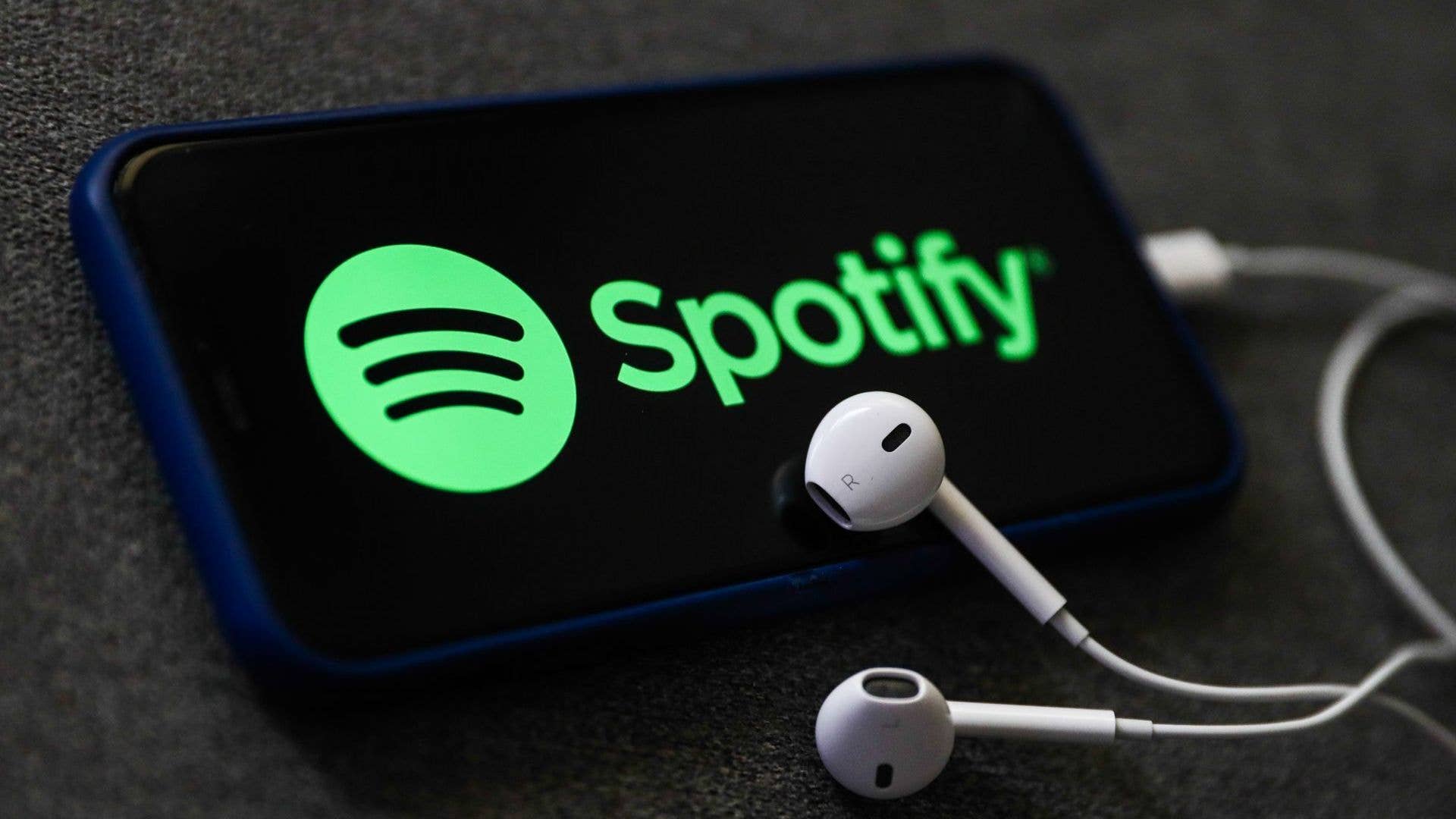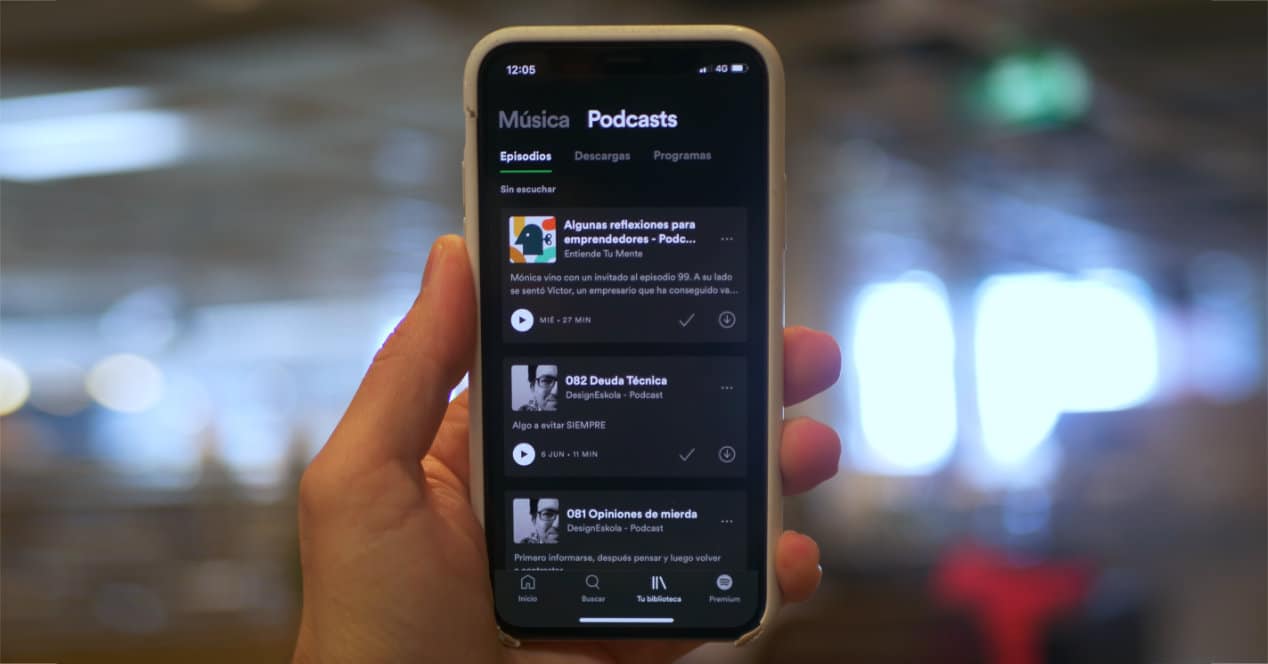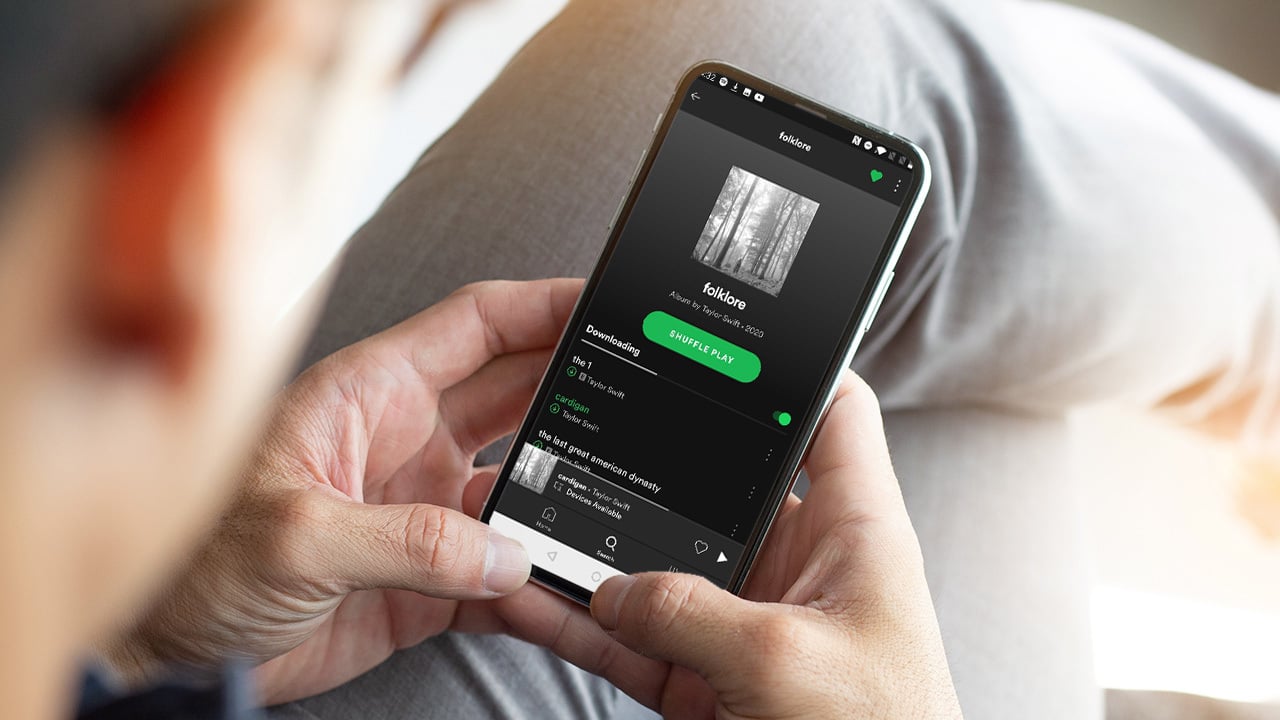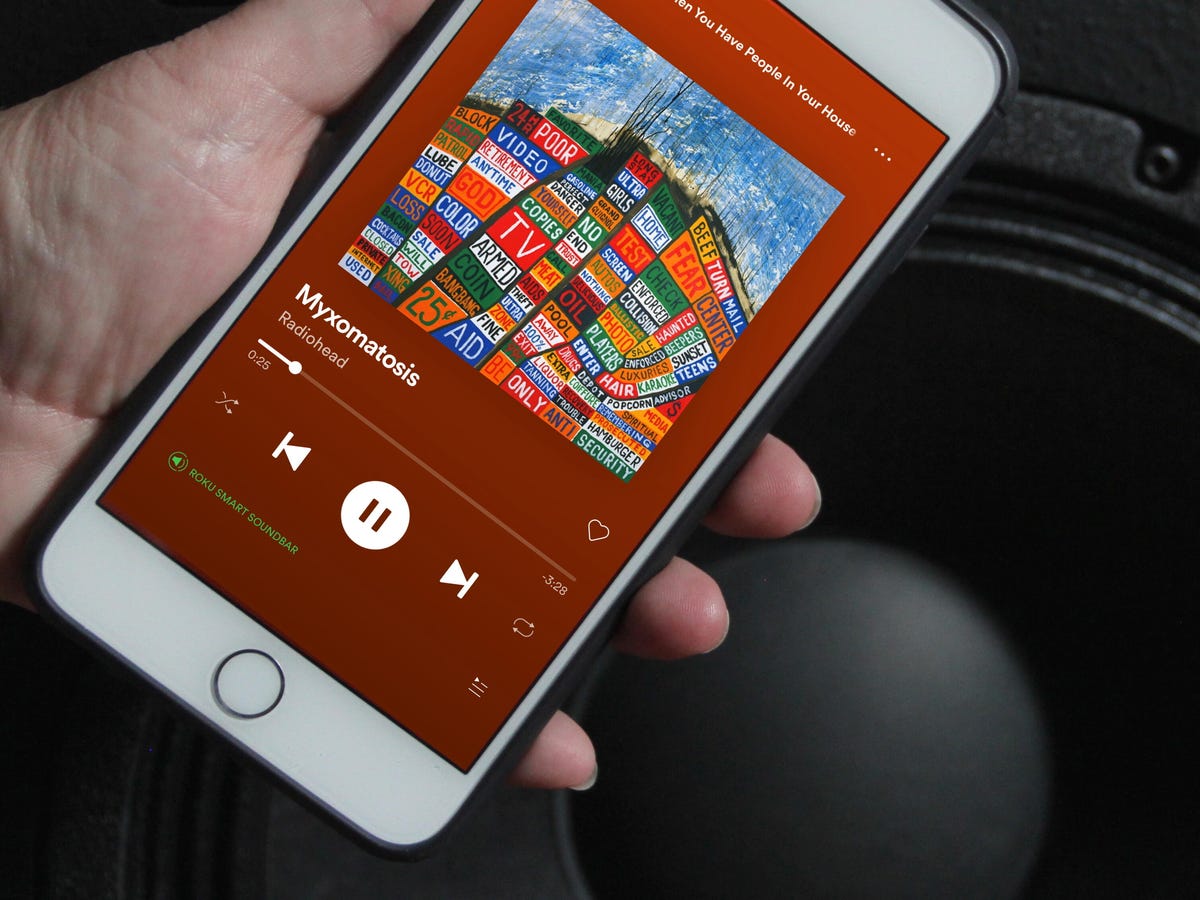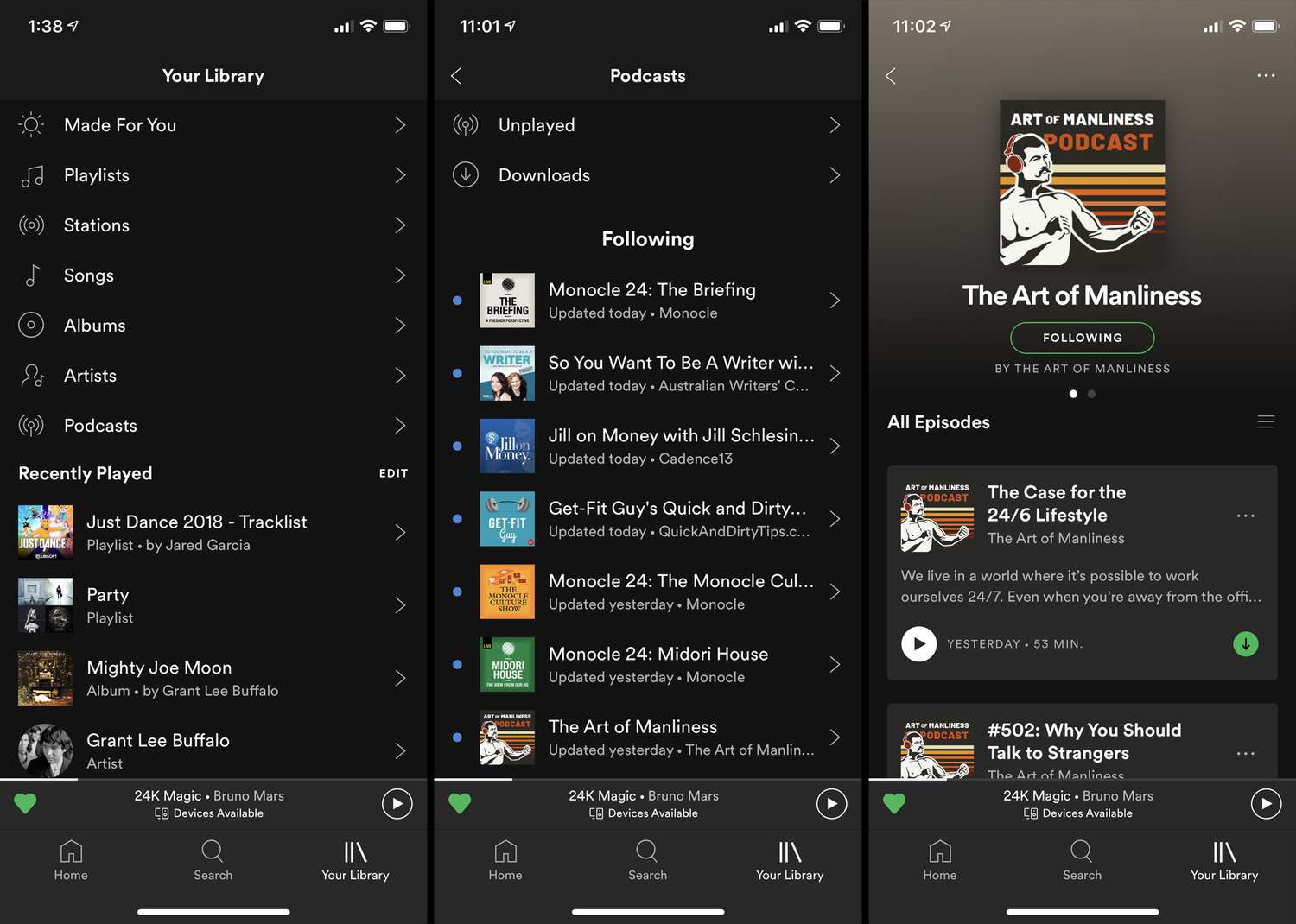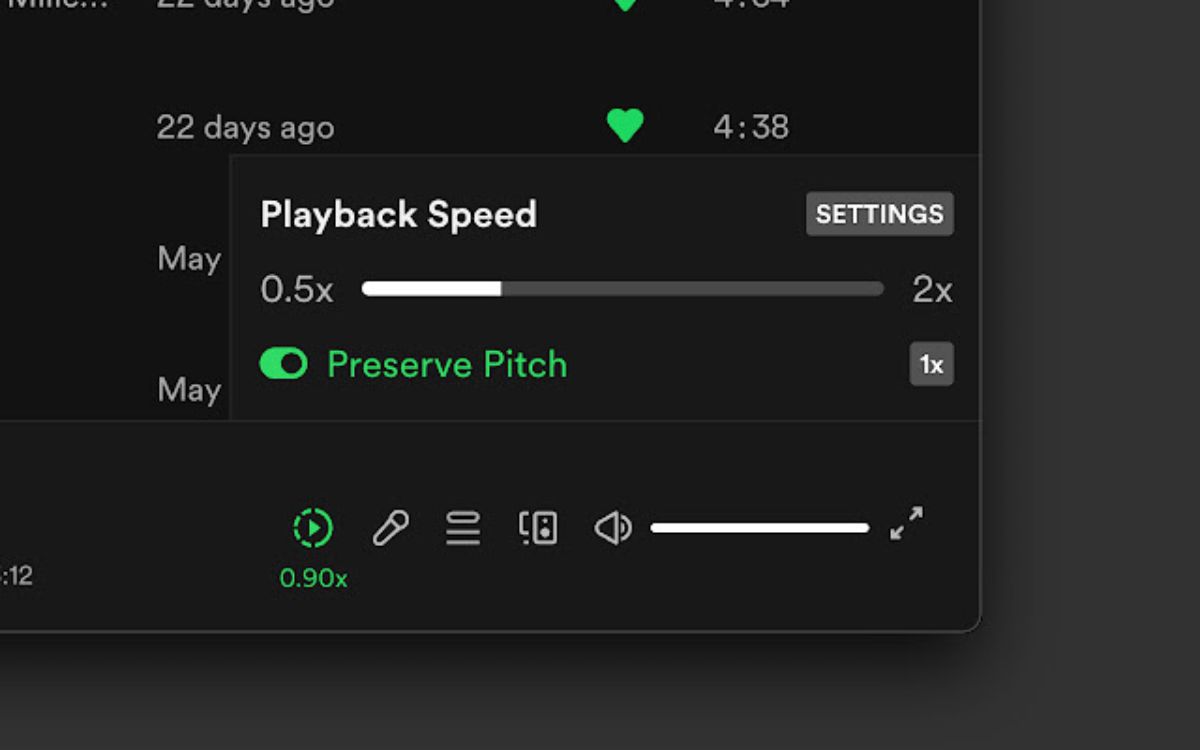Home>Events & Info>Podcast>How To Upload Video Podcast On Spotify


Podcast
How To Upload Video Podcast On Spotify
Modified: January 22, 2024
Learn how to easily upload your video podcast on Spotify and reach a wider audience. Step-by-step guide for podcasters looking to expand their reach with video content.
(Many of the links in this article redirect to a specific reviewed product. Your purchase of these products through affiliate links helps to generate commission for AudioLover.com, at no extra cost. Learn more)
Table of Contents
- Introduction
- Step 1: Creating and Preparing Your Video Podcast
- Step 2: Choosing a Podcast Hosting Platform
- Step 3: Uploading the Video Podcast to the Hosting Platform
- Step 4: Verifying Your Podcast RSS Feed
- Step 5: Submitting Your Podcast to Spotify
- Step 6: Promoting and Sharing Your Video Podcast on Spotify
- Conclusion
Introduction
Welcome to the world of podcasting! As a content creator, you’ve recognized the power and potential of podcasting as a medium to connect with your audience. However, with the rise in popularity of video podcasts, you may be wondering how to upload your video podcast on Spotify, one of the largest podcast platforms out there.
In this article, we will guide you through the step-by-step process of uploading your video podcast on Spotify, from creating and preparing your video podcast to promoting and sharing it with your target audience. By following this guide, you’ll be able to showcase your unique content to millions of Spotify users around the world.
But before we dive into the nitty-gritty of uploading your video podcast, let’s take a moment to understand the significance of Spotify as a podcast platform. With over 345 million monthly active users, including both free and premium subscribers, Spotify offers a massive opportunity to reach a wide audience. Its user-friendly interface, curated playlists, and personalized recommendations make it an ideal platform for discovering and consuming podcasts.
Video podcasts, also known as vodcasts or vidcasts, take podcasting to the next level by incorporating visual elements alongside the audio content. This unique format allows you to engage your audience on multiple levels, enhancing their overall listening experience. Whether you’re hosting interviews, sharing tutorials, or presenting your content in a visually appealing way, video podcasts provide a captivating and immersive experience.
Now that you understand the benefits of uploading your video podcast on Spotify, let’s dive into the practical steps to make it happen. By the end of this article, you’ll have the knowledge and confidence to successfully upload your video podcast on Spotify and share it with the world.
Step 1: Creating and Preparing Your Video Podcast
The first step in uploading your video podcast on Spotify is to create and prepare the content. Here are the key things to consider:
- Define your podcast format: Determine the format of your video podcast, whether it’s an interview-style show, a solo presentation, or a panel discussion. This will help you establish the overall structure and tone of your podcast.
- Create engaging content: Plan your episodes in advance and prepare compelling topics or themes that resonate with your target audience. Research and gather the necessary information, and consider incorporating visuals, graphics, or demonstration elements to enhance the viewer’s experience.
- Invest in quality equipment: To ensure high-quality video and audio production, invest in a good camera, microphone, and lighting setup. While you don’t need professional-grade equipment, aim for clear and crisp visuals and audio to provide an enjoyable viewing experience.
- Script and outline your episodes: Although video podcasts often have a more casual and conversational feel, having a script or outline can help you stay organized and on track. It will also ensure that you cover all the important points you want to discuss.
- Record and edit your episodes: Once you have your equipment and script ready, it’s time to start recording. Find a quiet space, set up the camera and microphone, and hit the record button. After recording, edit your episodes using video editing software that allows you to trim, enhance, and add any necessary graphics or overlays.
- Optimize for different platforms: Keep in mind that your video podcast may be consumed on various platforms, so optimize your videos for different screen sizes and formats. Consider using subtitles or captions to make your content more accessible.
Remember, your goal is to create engaging and visually appealing content that keeps your viewers hooked. Take the time to experiment, refine your style, and find what works best for your podcast and target audience.
Now that you have your video podcast content created and prepared, let’s move on to the next step: choosing a podcast hosting platform.
Step 2: Choosing a Podcast Hosting Platform
Choosing the right podcast hosting platform is crucial for successfully uploading your video podcast on Spotify. Podcast hosting platforms act as a bridge between your podcast and various podcast directories, including Spotify. Here are some factors to consider when selecting a podcast hosting platform:
- Features and functionality: Look for a hosting platform that offers the necessary features for hosting and distributing video podcasts. This includes video file support, RSS feed generation, episode scheduling, customizable player options, and analytics to track your podcast’s performance.
- Storage and bandwidth: Determine how much storage and bandwidth you require based on the size and frequency of your video podcast episodes. Ensure that the hosting platform provides enough resources to support your podcast without compromising on quality.
- Integration with Spotify: Check if the hosting platform has a seamless integration with Spotify. This simplifies the process of submitting your podcast to Spotify and ensures that your episodes are delivered and updated on the platform without any issues.
- Monetization options: If you plan to monetize your video podcast, research if the hosting platform offers monetization features such as advertising insertion, sponsorship opportunities, or the ability to sell merchandise directly from your podcast.
- Support and customer service: Choose a hosting platform that provides reliable customer support, including technical assistance and troubleshooting. It’s essential to have a responsive team that can help you resolve any issues you may encounter along the way.
There are several popular podcast hosting platforms to consider, such as Libsyn, Anchor, Buzzsprout, and Podbean. Explore their features, pricing plans, and user reviews to determine which one aligns best with your needs and budget.
Once you’ve chosen a podcast hosting platform, sign up for an account and familiarize yourself with the platform’s interface and features. Next, it’s time to upload your video podcast to the hosting platform, which we’ll cover in the next step.
Step 3: Uploading the Video Podcast to the Hosting Platform
Now that you have selected a podcast hosting platform, it’s time to upload your video podcast. This step involves uploading your video files, adding necessary details, and organizing your episodes. Follow these steps to successfully upload your video podcast to the hosting platform:
- Create a new podcast show: Most hosting platforms will have an option to create a new podcast show. Click on this option and provide the required information, such as the show title, description, and cover art. These details will be included in your podcast’s RSS feed, so make sure they accurately represent your podcast.
- Upload your video podcast episodes: Depending on the hosting platform, you may have different options for uploading your video podcast episodes. Typically, you can either upload the video file directly or provide a URL to the video hosted elsewhere. Follow the platform’s instructions to upload your episodes one by one.
- Add episode details: For each episode, provide relevant details such as the episode title, a brief description, and any guests or topics featured. This information will be displayed alongside your video podcast when it is played on various platforms.
- Set the episode order: Arrange your episodes in the correct order to ensure a seamless viewing experience for your audience. Most hosting platforms allow you to easily reorder your episodes using a simple drag-and-drop interface.
- Add show notes and timestamps: Consider adding show notes or timestamps to your episodes. Show notes provide additional context or information about the episode, while timestamps allow users to jump directly to specific sections within the video podcast.
- Preview your episodes: Take the time to review each episode before publishing. Play the video, check for any audio or visual issues, and ensure that all the details are accurate and in place.
Once you have finished uploading and organizing your video podcast episodes, your hosting platform will generate an RSS feed for your podcast. This feed acts as a distribution channel for your podcast and is required for submitting your podcast to Spotify, which we will cover in the next step.
Now that your video podcast is uploaded to the hosting platform, it’s time to verify your podcast RSS feed.
Step 4: Verifying Your Podcast RSS Feed
Verifying your podcast RSS feed is an important step before submitting your video podcast to Spotify. This ensures that your feed is properly formatted and contains all the necessary information for Spotify to process and display your podcast correctly. Follow these steps to verify your podcast RSS feed:
- Use an RSS feed validator: There are various online tools available that can validate your podcast RSS feed. These tools check for any formatting errors or missing elements in your feed. Simply copy and paste the URL of your podcast RSS feed into the validator, and it will analyze your feed and provide a report of any errors or warnings.
- Verify key details: Pay attention to specific elements in the validation report, such as the podcast title, description, episode titles, and media file URLs. Ensure that all the information is accurate and properly formatted according to the guidelines set by Spotify.
- Fix any errors: If the RSS feed validator identifies any errors or warnings, take the necessary steps to fix them. This may involve editing the information in your hosting platform or adjusting your podcast settings. Be diligent in resolving any issues to ensure the smooth submission process.
- Preview your podcast on different platforms: After verifying and making necessary adjustments, preview your podcast on different platforms and podcast players to check if everything appears as expected. Pay attention to the show artwork, episode descriptions, and audio/video playback to ensure a consistent and professional presentation.
By properly verifying your podcast RSS feed, you ensure that Spotify will be able to accurately process and display your video podcast on their platform. Once your podcast feed is verified, it’s time to move on to the next step: submitting your podcast to Spotify.
Now that you’ve verified your podcast RSS feed, it’s time to submit your video podcast to Spotify.
Step 5: Submitting Your Podcast to Spotify
With your video podcast created, uploaded, and verified, it’s time to submit your podcast to Spotify. Follow these steps to successfully submit your video podcast:
- Create a Spotify for Podcasters account: Visit the Spotify for Podcasters website and create an account if you don’t already have one. Sign in using your Spotify account credentials or create a new account specifically for podcasting.
- Claim your podcast: Once you’re logged in to Spotify for Podcasters, click on “Add A Show” or “Claim A Show.” Search for your podcast using its title or RSS feed URL. If your podcast is already listed on Spotify, you can claim it. Otherwise, click on “Submit A Podcast” and follow the instructions to provide your podcast details and RSS feed URL.
- Review and edit your podcast details: After claiming or submitting your podcast, review the details that are automatically pulled from your RSS feed. Ensure that the title, description, artwork, and other metadata accurately represent your podcast. Make any necessary edits to enhance your podcast’s discoverability and appeal.
- Submit your podcast: Once you are satisfied with the podcast details, submit your podcast to Spotify for their review. This process may take some time as Spotify verifies the content and ensures it meets their guidelines and standards.
- Receive confirmation: After review, Spotify will notify you of the status of your submission. If all goes well, you will receive confirmation that your podcast has been accepted and added to their platform. You will now be able to find your podcast on Spotify by searching for its title or browsing the podcast section.
It’s important to note that the submission process to Spotify may vary slightly depending on the hosting platform you are using. Some hosting platforms offer direct integration with Spotify, simplifying the submission process even further.
Once your video podcast is live on Spotify, make sure to regularly update and promote your episodes to attract and engage listeners. Now that you have successfully submitted your podcast to Spotify, let’s move on to the final step: promoting and sharing your video podcast.
Step 6: Promoting and Sharing Your Video Podcast on Spotify
Once your video podcast is live on Spotify, it’s crucial to promote and share it to expand your audience and maximize its reach. Here are some effective strategies for promoting and sharing your video podcast:
- Create eye-catching cover art: Craft visually appealing cover art that represents your podcast and captures the attention of potential listeners. Your cover art should be recognizable, memorable, and relevant to your podcast’s content.
- Share on social media: Leverage your social media presence to promote your video podcast. Share teaser clips, episode highlights, behind-the-scenes footage, or engaging visuals to generate interest and drive traffic to your podcast on Spotify. Don’t forget to include a link to your podcast and use relevant hashtags.
- Collaborate with influencers: Partner with influencers or established podcasters in your niche to cross-promote each other’s podcasts. This can help you tap into their existing audience and expand your reach to new listeners who may be interested in your video podcast.
- Engage with your audience: Interact with your listeners on Spotify by responding to comments, answering questions, and addressing feedback. Building a strong connection with your audience will encourage them to share and recommend your podcast to others.
- Utilize email newsletters: If you have an email list, send regular updates and sneak peeks of your video podcast episodes to your subscribers. Encourage them to listen, share, and provide feedback. Consider offering exclusive content or behind-the-scenes footage as a way to reward your loyal subscribers.
- Guest appearances and interviews: Seek opportunities to be a guest on other podcasts or media platforms. This provides exposure to a new audience and allows you to share insights about your video podcast. Always mention your podcast and provide a direct link to Spotify for listeners to easily find and subscribe.
- Encourage reviews and ratings: Reviews and ratings on Spotify play a significant role in increasing visibility and attracting new listeners. Ask your audience to leave reviews and provide feedback, emphasizing the value they can bring to your podcast.
Remember, promoting your video podcast is an ongoing process. Consistently engage with your audience, explore new promotional opportunities, and keep improving the quality of your content to increase your chances of success on Spotify.
Congratulations! You have reached the final step of successfully uploading and promoting your video podcast on Spotify. With your podcast now live and your promotional efforts in full swing, continue to create compelling content and connect with your audience to build a thriving podcast community.
By following the steps outlined in this guide, you are well on your way to expanding your reach, gaining new listeners, and establishing a strong presence in the world of video podcasting.
Conclusion
Congratulations on successfully uploading and promoting your video podcast on Spotify! You’ve taken the necessary steps to showcase your unique content to millions of listeners around the world. By following the steps outlined in this comprehensive guide, you’ve overcome the challenges of creating, preparing, and uploading your video podcast, and now have the tools to promote and share it effectively.
Remember that uploading your video podcast on Spotify is just the beginning of your podcasting journey. As you continue to refine and produce engaging episodes, focus on building a loyal and active audience. Interact with your listeners, encourage feedback, and consistently provide valuable content that keeps them coming back for more.
Utilize the power of social media to spread the word about your podcast. Engage with influencers and collaborate with other podcasters to amplify your reach. Leverage emails and newsletters to cultivate a strong connection with your subscribers. Implement marketing strategies that encourage reviews, ratings, and word-of-mouth recommendations. All these efforts will contribute to the growth and success of your podcast on Spotify.
Stay updated with podcasting trends and continue to improve the quality of your video podcast. Experiment with different formats, invite exciting guests, and explore new topics to keep your audience engaged and coming back for more.
Remember, podcasting is a dynamic and ever-evolving landscape. Stay curious, adapt to new technologies, and embrace changes that can enhance your podcasting efforts. Regularly evaluate your performance by analyzing listener engagement and feedback, and adjust your strategies accordingly.
With dedication, consistency, and a passion for creating valuable content, your video podcast can gain traction and capture the hearts of listeners both on Spotify and beyond. So, keep pushing forward, and enjoy the journey of sharing your knowledge, stories, and perspectives through the power of video podcasting!


